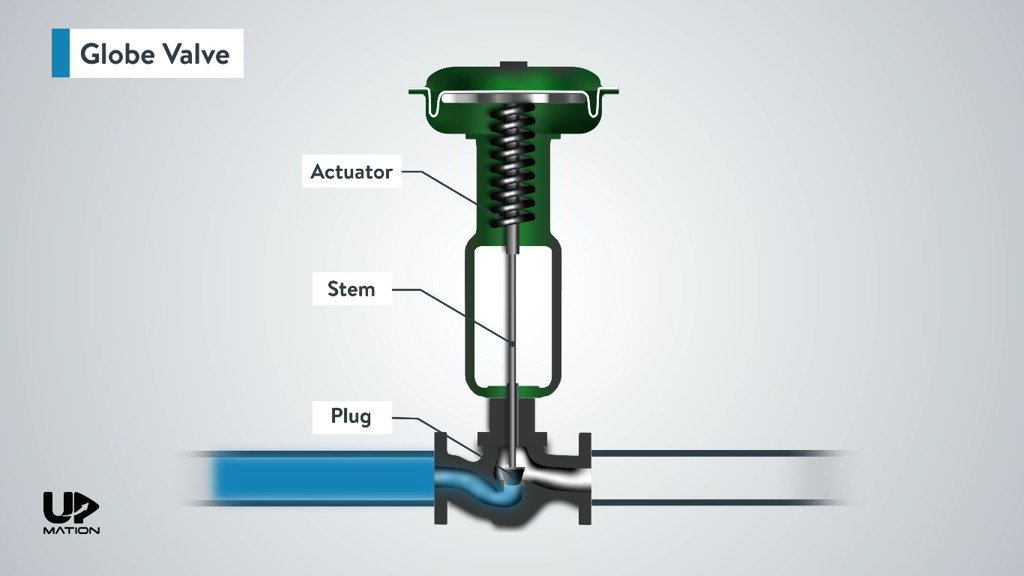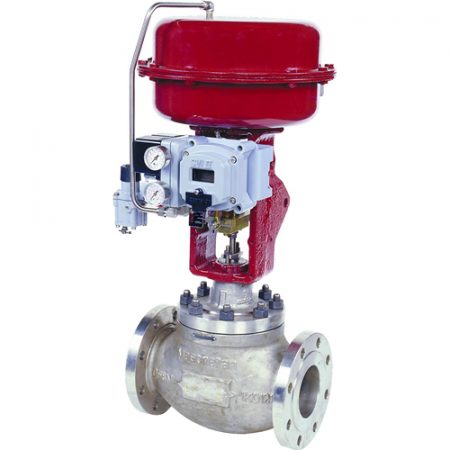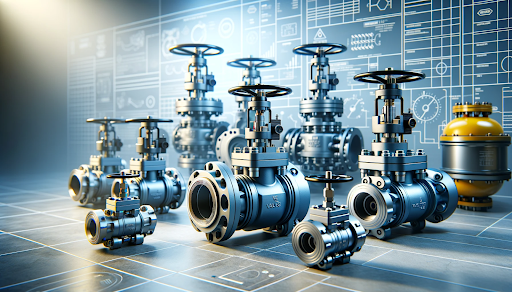Enhancing Operational Efficiency with Advanced Control Valves
Enhancing Operational Efficiency with Advanced Control Valves
Blog Article

Maximize Energy Financial Savings and Comfort With Advanced Structure Automation Controls
In the world of modern style and center administration, the assimilation of innovative structure automation controls stands as a pivotal development. The merging of modern technology and sustainability has actually birthed a brand-new period where power effectiveness, comfort optimization, and functional streamlining are no much longer remote desires yet attainable truths. By taking advantage of the power of automation, structures can adapt, react, and evolve in manner ins which were as soon as unimaginable. The potential for significant power cost savings and boosted comfort is not simply a promise yet an opportunity waiting to be met. This paradigm change in building administration holds the key to unlocking a world where environmental conscientiousness and passenger health sympathetically exist side-by-side within the walls of our structures.
Power Efficiency Conveniences
Energy efficiency benefits can substantially minimize power usage and operational expenses in buildings. Energy-efficient systems, such as advanced structure automation controls, can enhance the usage of resources like home heating, lights, and air conditioning, leading to reduced power expenses over time.
In addition, enhanced power effectiveness can lengthen the lifespan of structure equipment and systems. By operating much more effectively, HVAC systems, lighting fixtures, and other building components experience less damage, leading to minimized maintenance and replacement expenses. Furthermore, energy-efficient structures typically command higher home worths and rental rates, supplying long-term economic advantages to owners.
Moreover, energy efficiency can boost resident comfort and efficiency. Properly regulated interior settings with optimal lights and thermal problems develop a more helpful and enjoyable office, resulting in boosted employee satisfaction and performance. Overall, the energy efficiency benefits related to innovative structure automation controls are multifaceted, incorporating expense savings, environmental stewardship, and owner health.
Enhanced Convenience Control
Enhancing comfort control in structure environments requires a sophisticated assimilation of advanced automation systems for optimum owner health. By utilizing innovative building automation controls, centers can tailor the interior environment to fulfill the particular needs and choices of passengers. control valves.
Enhanced comfort control goes beyond standard temperature adjustments. It consists of attributes such as customized setups, tenancy sensing units, and natural light usage to create a receptive and vibrant environment. By incorporating these advanced controls, structures can not only boost comfort yet additionally enhance energy effectiveness by enhancing system procedures based upon real tenancy and usage patterns. Inevitably, focusing on resident convenience via advanced automation systems leads to an extra pleasurable and healthier indoor setting.
Functional Performance Improvements

Furthermore, the implementation of real-time tracking and analytics tools enables structure operators to determine power inadequacies and operational anomalies without delay. By continuously keeping an eye on energy usage patterns and system efficiency metrics, changes can be made in real-time to maximize power intake and ensure peak operational performance. control valves. Furthermore, including demand feedback methods into structure automation controls can further boost operational efficiency by dynamically readjusting energy use based upon grid conditions and prices signals
Indoor Environment Optimization
Efficient indoor climate optimization is a fundamental element of structure automation controls, making sure owners' convenience and wellness while making the most of energy savings. By utilizing innovative sensors and controls, building automation systems can continually monitor and readjust temperature level, humidity degrees, air quality, and air flow to create an ideal interior setting. Maintaining comfy and constant problems not only boosts occupant complete satisfaction yet additionally enhances productivity and overall health.
Interior environment optimization additionally plays a critical duty in power effectiveness. By fine-tuning heating, cooling, and air flow systems based on real-time data and tenancy patterns, building automation controls can substantially lower power usage - control valves. As an example, implementing approaches such as demand-controlled air flow and thermal zoning can help decrease energy waste while guaranteeing that each area of the structure receives the needed conditioning.

Lasting Atmosphere Development
Structure automation manages not only enhance interior climate conditions for energy performance and owner comfort however additionally lay the structure for creating a sustainable environment through calculated administration of systems and sources. By incorporating sophisticated building automation web technologies, such as sensors, actuators, and intelligent software, facilities can adjust and monitor energy usage in real-time to decrease waste and reduce their carbon footprint. These systems enable predictive maintenance, identifying possible concerns before they intensify and maximizing devices performance to boost longevity and efficiency.
In addition, lasting environment creation prolongs past energy monitoring to incorporate water preservation, waste decrease, and indoor air quality enhancement. Structure automation controls can manage water use, detect leaks, and guarantee correct garbage disposal practices, contributing to total sustainability initiatives. In addition, by managing and monitoring ventilation and purification systems, these innovations enhance resident health and wellness and efficiency while decreasing power consumption linked with HVAC procedures.
Conclusion
To conclude, progressed building automation controls offer considerable advantages in terms of energy cost savings, convenience control, functional effectiveness, indoor climate optimization, and creating a lasting setting. By carrying out these controls, structures can accomplish optimal efficiency while reducing energy intake and improving resident comfort. It appears that the usage of advanced automation innovation is essential in boosting structure efficiency and creating a more lasting future.
Power effectiveness benefits can considerably lower energy consumption and operational see expenses in buildings. On the whole, the power efficiency benefits associated with sophisticated building automation controls are complex, incorporating expense savings, environmental stewardship, and owner wellness.
In addition, incorporating need feedback techniques into building automation controls can further enhance operational performance by dynamically changing energy use based on grid problems and rates signals.
Structure automation controls not only maximize interior environment problems for power performance and owner comfort however likewise lay the structure for creating a lasting environment with critical monitoring of systems and resources.In final thought, progressed structure automation regulates deal significant benefits in terms of power financial savings, convenience control, functional efficiency, interior environment optimization, and creating a lasting setting.
Report this page